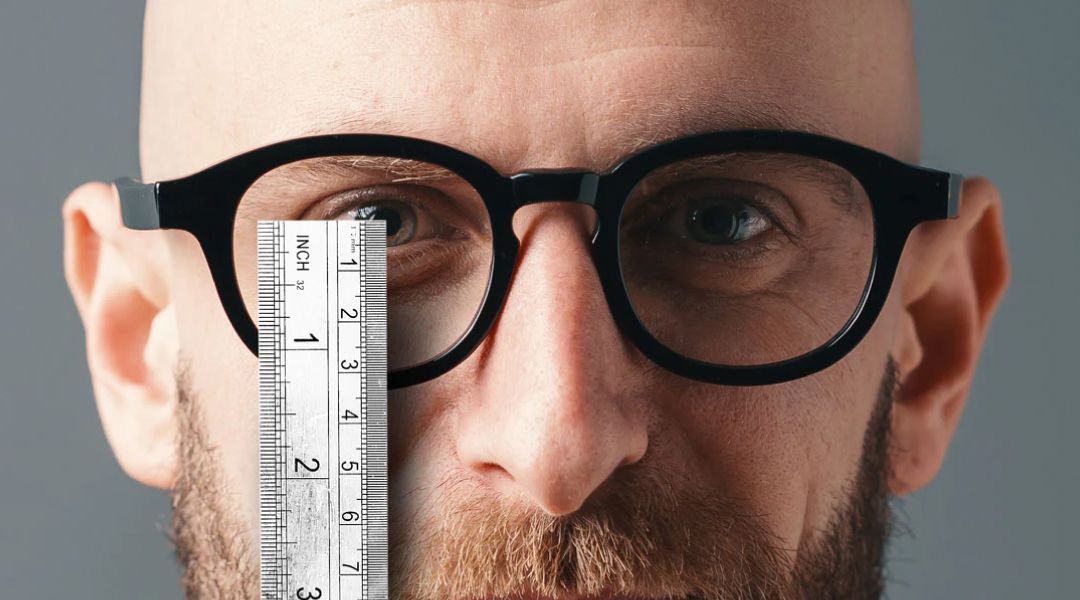Unlocking the Mystery of PD: Why Optician Expertise Matters

Read time: 4 minutes
In the world of vision-enhancing eyewear, understanding the Pupillary Distance (PD) is crucial for achieving optimal vision and comfort. It's a measurement that determines the distance between the centers of your pupils, a key factor in crafting lenses that align perfectly with your eyes. Surprisingly, though, your PD isn't typically found on your prescription. Let's delve into why this is the case, the pitfalls of attempting self-measurement, and how professionals like Urban Optiks Optometry use cutting-edge technology for precise results.
The Enigma of Missing PD's on Prescriptions
If you've ever wondered why your PD isn't listed on your eyeglass prescription, you're not alone. The reason lies in the nature of the PD measurement itself. Unlike other measurements noted in your prescription, the PD is unique to each individual and is best determined in person by an optician.
Opticians use specialized tools and techniques to measure your PD accurately, ensuring that your eyewear is crafted to fit you perfectly. While your prescription details the lens power needed for each eye, it doesn't account for the nuanced distance between your pupils. This information is critical for the correct alignment of your lenses, allowing you to experience clear and comfortable vision.
The Dangers of DIY PD Measurement
In the age of online shopping and DIY solutions, some may be tempted to measure their PD at home. However, attempting to measure your own PD can lead to inaccurate results and, consequently, eyewear that doesn't provide the optimal visual experience. Here are a few reasons why seeking professional assistance is essential:
- Precision Matters: Achieving an accurate PD measurement requires precision. A slight error in measurement can result in discomfort, eyestrain, and even headaches. Opticians are trained to take precise measurements, ensuring that your lenses are perfectly aligned with your eyes.
- Eye Health Considerations: Opticians are not only measuring the distance between your pupils but also considering your overall eye health. They can identify any issues that may affect your vision and make recommendations accordingly. DIY measurements lack this holistic approach.
- Variability in Techniques: There are different methods for measuring PD, and the accuracy of each can vary. Opticians are trained to use reliable and standardized techniques, minimizing the margin for error. DIY attempts may employ methods that lack accuracy and consistency.
Urban Optiks Optometry: Embracing Digital Precision
Urban Optiks Optometry, a beacon of excellence in eye care, understands the importance of precision in eyewear fitting. To enhance the accuracy of PD measurements, they utilize state-of-the-art digital technology, including the ZEISS iTerminal.
ZEISS iTerminal: Revolutionizing Precision
The ZEISS iTerminal is a cutting-edge digital tool designed to measure your PD with unparalleled accuracy. By combining high-resolution imaging and advanced software, it captures precise measurements in a matter of seconds. Here's how it works:
- Digital Imaging:
The ZEISS iTerminal employs high-resolution imaging to capture detailed information about your eyes, including the precise location of your pupils.
- Instant Measurements: In just a few seconds, the iTerminal calculates your PD, ensuring a level of accuracy that surpasses traditional manual measurements.
- Customized Precision: The digital nature of the ZEISS iTerminal allows for customization based on your unique facial features, ensuring that your eyewear is tailored to your specific needs.
The Accurate Results: What Does the ZEISS iTerminal Measure?
The ZEISS iTerminal doesn't just measure the distance between your pupils; it takes a comprehensive approach to ensure optimal lens positioning. It considers:
Monocular PD: The distance from the center of your nose to the center of each pupil is measured individually for each eye, accounting for any asymmetry.
Binocular PD:
The total distance between the centers of both pupils, crucial for the correct alignment of multifocal lenses.
Fitting Height: Ensuring the lenses are positioned correctly relative to the height of your eyes, preventing discomfort and distortion.
Trust the Professionals at Urban Optiks Optometry
While the allure of convenience may prompt some to explore DIY solutions, the risks involved in self-measuring PD far outweigh any perceived benefits. Urban Optiks Optometry is committed to providing a superior eye care experience, leveraging digital precision to ensure your eyewear meets the highest standards.
The Takeaway
Understanding the significance of your PD and entrusting its measurement to professionals is paramount for optimal vision and eye health. Urban Optiks Optometry's use of advanced technology exemplifies their dedication to excellence, ensuring that your eyewear not only meets but exceeds your expectations. Visit Urban Optiks Optometry and embrace the future of eyewear fitting with confidence. Your eyes deserve nothing less than the best.
Share this blog post on social or with a friend:
The information provided in this article is intended for general knowledge and educational purposes only and should not be construed as medical advice. It is strongly recommended to consult with an eye care professional for personalized recommendations and guidance regarding your individual needs and eye health concerns.
All of Urban Optiks Optometry's blog posts and articles contain information carefully curated from openly sourced materials available in the public domain. We strive to ensure the accuracy and relevance of the information provided. For a comprehensive understanding of our practices and to read our full disclosure statement, please click here.


















